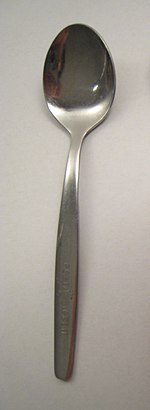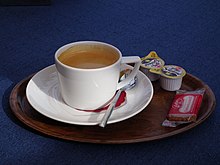A Perfect Cup of Tea
Summer marks the middle of green tea season, which runs from late spring to fall. While it may seem counterintuitive to drink hot liquids in the heat, many Asian cultures believe that doing so will increase sweating and help cool you off.
But preparing green tea is a delicate process that most people get wrong, says Rona Tison, senior vice president of corporate relations for Ito En, Inc., a Japanese-tea company that sells bottled tea as well loose leaf tea from its Manhattan store. Green tea, unlike black tea, has not been oxidized and can easily turn bitter if not made properly.
A good cup of green tea begins with a fresh, high-quality leaf. Green tea 'is similar to having a fresh vegetable. It is perishable and has a shelf life,' Ms. Tison says.
Tea leaves produce the best flavor when used within two months of purchasing. Six months is the maximum time to store green tea. The leaves absorb smells (they are sometimes used as a deodorizer) so they should be stored in an airtight, moisture-free metal or tin container that is away from light. Out of date tea leaves will be brittle and dry, rather than lush and aromatic.
Ms. Tison uses mineral or spring water for brewing. One of the most common mistakes people make when brewing tea, she says, is adding boiling water, which burns the leaves and turns them bitter. Ms. Tison pours hot water into a 'yuzamashi,' or a Japanese cooling vessel. If you don't have a 'yuzamashi,' you can pour water into a cup or bowl to let it cool off. 'You'll know when it's [ready] because you can actually hold the vessel,' Ms. Tison says.
She measures about one teaspoon of leaves per teacup into a pot and pours in the warm water, letting it steep for a minute, but no more than two. Whether loose in a teapot or placed in an infuser, leaves should never be packed. 'You want the leaves to unfurl to really get the flavor out of the tea,' she says.
Ms. Tison gently swirls the teapot while the tea is steeping to make sure she mixes all the tea with the water. If she is serving more than one cup, she pours a little at a time in each cup to balance out the flavor.
Tea leaves can generally be steeped up to three times before the flavor runs out. It is important, however, to get all the water out between steepings. Any water that's left behind will oversteep the leaves, making your next batch overly tannic and bitter.
It's also bad form: 'In Japan, they say that you want to enjoy the tea to the very last drop,' Ms. Tison says.
Elva Ramirez
But preparing green tea is a delicate process that most people get wrong, says Rona Tison, senior vice president of corporate relations for Ito En, Inc., a Japanese-tea company that sells bottled tea as well loose leaf tea from its Manhattan store. Green tea, unlike black tea, has not been oxidized and can easily turn bitter if not made properly.
A good cup of green tea begins with a fresh, high-quality leaf. Green tea 'is similar to having a fresh vegetable. It is perishable and has a shelf life,' Ms. Tison says.
Tea leaves produce the best flavor when used within two months of purchasing. Six months is the maximum time to store green tea. The leaves absorb smells (they are sometimes used as a deodorizer) so they should be stored in an airtight, moisture-free metal or tin container that is away from light. Out of date tea leaves will be brittle and dry, rather than lush and aromatic.
Ms. Tison uses mineral or spring water for brewing. One of the most common mistakes people make when brewing tea, she says, is adding boiling water, which burns the leaves and turns them bitter. Ms. Tison pours hot water into a 'yuzamashi,' or a Japanese cooling vessel. If you don't have a 'yuzamashi,' you can pour water into a cup or bowl to let it cool off. 'You'll know when it's [ready] because you can actually hold the vessel,' Ms. Tison says.
She measures about one teaspoon of leaves per teacup into a pot and pours in the warm water, letting it steep for a minute, but no more than two. Whether loose in a teapot or placed in an infuser, leaves should never be packed. 'You want the leaves to unfurl to really get the flavor out of the tea,' she says.
Ms. Tison gently swirls the teapot while the tea is steeping to make sure she mixes all the tea with the water. If she is serving more than one cup, she pours a little at a time in each cup to balance out the flavor.
Tea leaves can generally be steeped up to three times before the flavor runs out. It is important, however, to get all the water out between steepings. Any water that's left behind will oversteep the leaves, making your next batch overly tannic and bitter.
It's also bad form: 'In Japan, they say that you want to enjoy the tea to the very last drop,' Ms. Tison says.
Elva Ramirez
綠茶之道非常道
綠
茶採摘季節從晚春一直延續到秋季﹐夏季正好處於中間。大熱天飲熱茶聽起來似乎有悖常理﹐但許多亞洲文化認為這有助發汗解暑﹐可以清涼降火。但Ito En, Inc.負責企業關係的高級副總裁羅娜•蒂松(Rona Tison)介紹道﹐綠茶茶藝可是門精緻的學問﹐大多數人都存在誤區。Ito En是一家日本茶葉公司﹐在紐約曼哈頓銷售瓶裝茶與散葉茶。綠茶與紅茶不同﹐沒有經過發酵氧化﹐如果處理不當很容易發澀變苦。
一杯上等綠茶源自新鮮優質的茶葉。蒂松說﹐綠茶就象新鮮的蔬菜一樣會變質﹐有保存期限。
茶葉在購買後兩個月內品嘗才能保證最佳品質。六個月是綠茶存放時間的上限。茶葉會吸收異味(有時可以用做除臭劑)﹐所以需要避光保存在密封、乾燥的金屬或是錫罐中。過期的茶葉會變得乾燥易碎﹐口感與 味道都會明顯下降。
蒂松用礦泉水或者泉水泡茶。她說﹐泡茶最常見的錯誤就是用開水﹐因為開水會燙壞茶葉﹐使茶水變苦。蒂松先將熱水注入yuzamashi﹐這是一種日本的冷卻容器。如果你沒有這個容器﹐那也可以用杯子或是碗來冷卻熱水。蒂松說﹐你用手端著容器﹐就知道什麼時候水溫合適了。
她向茶壺中倒入茶葉﹐比例大約是每杯茶一茶匙茶葉﹐然後注入熱水﹐讓茶葉浸泡一分鐘左右的時間(不超過兩分鐘為佳)。不管是用茶壺還是沖茶器﹐茶葉都不能過量。她介紹道﹐茶葉需要充分舒展﹐才能真正散發出茶香。
蒂松輕輕地搖動茶壺﹐使茶葉在熱水中充分浸泡。如果需要倒好幾杯茶﹐每次她會向各個杯子倒入大致相當的茶水﹐讓香味均勻分佈。
茶葉一般最多只能泡三次﹐再泡香味就所剩無幾。但需要注意的是﹐在下次加水前要將茶壺中的茶水倒完。不然剩餘的茶水會過度浸泡茶葉﹐浸出過多鞣酸﹐使得下一壺茶水變苦。
蒂松說:“在日本﹐人們喜歡飲盡最後一滴茶汁”。這也是一個壞習慣。
Elva Ramirez
Our bodies need salt, but if we consume it in excess, we increase our risk for hypertension, which can ultimately lead to heart disease. The American Heart Association (AHA) recommends consuming less than 1,500 mg of sodium per day. Here’s what that looks like:
1/4 teaspoon salt = 575 mg sodium
1/2 teaspoon salt = 1,150 mg sodium
3/4 teaspoon salt = 1,725 mg sodium
1 teaspoon salt = 2,300 mg sodium
1/2 teaspoon salt = 1,150 mg sodium
3/4 teaspoon salt = 1,725 mg sodium
1 teaspoon salt = 2,300 mg sodium
http://en.wikipedia.org/wiki/Teaspoon




沒有留言:
張貼留言